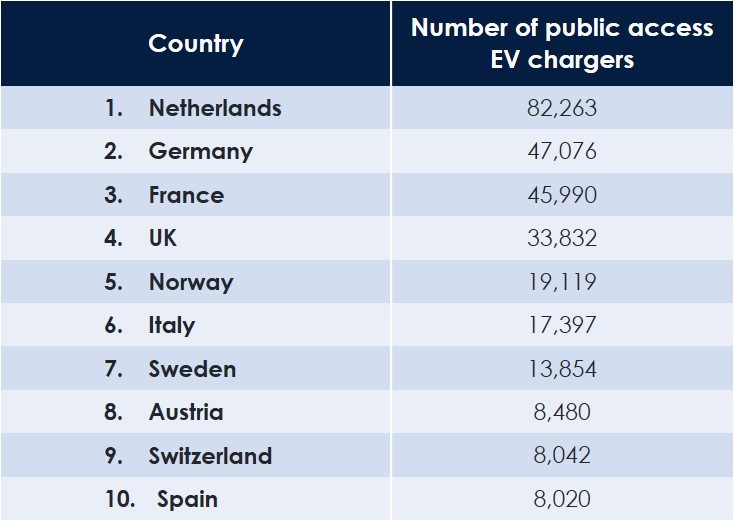How mobility management and the electric drivechain are opening the door to more sustainable fleets (1/2)
Updated on 14.06.2021
According to the European Federation for Transport and Environment, transport is Europe’s biggest source of CO2, responsible for the emission of over a quarter of all greenhouse gases.
Fleet managers are therefore in a uniquely powerful position to influence not just European but global CO2 emissions, to help the world meet the increasingly salient 2050 Paris climate commitments.
This is particularly the case given that most company cars are sold into the second-hand car market, putting fleet managers in control not just of their own vehicles, but also a large proportion of used vehicles in the private market.
In the first of this two-part blog, we look at some of the fleet procurement, vehicle utilisation and mobility management considerations that can help mitigate the environmental impact of both company vehicles, and those owned by employees but driven for business.
Going electric
Probably the most effective step any forward-thinking fleet manager could take would be towards the electrification of their fleet. Certainly, the cost of electric vehicles (EVs) has been dropping, while charging times have been speeding up and ranges increasing, fuelling its popularity.
The automotive market is reflecting this trend, with sales of electric cars more than doubling in Europe last year, pushing the region past China as the world’s biggest market for them. It is expected that 150 new BEV and PHEV models will hit the market in 2021, with experts estimating sales of about 4.6m electric cars by the end of the year [1].
Most governments are also offering generous grants or tax breaks to encourage the move to electric. In Norway, which has an aim for every new car sold in the country to be a zero-emissions vehicle by 2025, the government offers a range of incentives and benefits, including reductions to the purchase price and road tax. Owners of EVs in Norway also pay at least 50% lower parking and toll road charges. This is helping the country win the EV race, with 18.9 people per electric car [2].
Fleet decision-makers should take time to weight up their options – for some, retaining diesel on company car choice lists may prove the most prudent approach.
Purchase and lease costs for EVs still remain relatively high and residual values may simply not be strong enough to justify the purchase cost.
Diesel cars use an average of 15-20% less fuel than their petrol-powered counterparts – most noticeably on long motorway trips. Using less fuel means that diesel engines also produce less carbon dioxide (CO2) [3].
Companies also need to look closely at the pragmatics of charging availability across the areas where they operate. Some countries are a lot further ahead with the requisite charging infrastructure than others, as the table below illustrates.
France, in third position according to the latest available figures, has set standards high with a target of 100,000 charging stations by 2021, but not all countries are as ambitious.
Top 10 EU countries for number of public access EV chargers (in 2021 (YTD))

Source: www.eafo.eu, May 2021 (YTD)
Fuel policies should be reviewed on a regular basis to determine the most suitable approach, balancing cost-efficiency with and environmental outcomes. Smart buying strategies and fuel discount structures can help in controlling costs in the short term, but the business case for EVs vehicles over the mid and longer-term will become ever more compelling.
Challenging employees to think differently about mobility
The average car owned by an employee but used for business trips is around eight years old and produces 20pc more carbon emissions than the average company car or rental car [4].
Trying to persuade such employees not to automatically default to their own car for business trips is inevitably challenging, but concerted efforts to encourage multimodal transport are happening – often propped up by incentives.
For example, in France, residents will soon be given the chance to trade in their vehicles for an electric bike. The new scheme will provide individuals with a €2,500 grant to purchase an electric bike should they choose to scrap their vehicle [5].
It builds on previous policy incentives introduced by the French Government aimed at increasing the uptake of active modes including, fiscal incentives for companies to maintain bike fleets for employees, a general purchase subsidy for electric bikes and a bike repair subsidy.
Other countries such as Lithuania and Finland have also introduced similar measures, albeit with lower premium amounts.
In 2019, Belgium introduced the “transport budget”, in which an annual sum is allocated to the employee to fund their travel between home and work, provided they choose an environmentally friendly solution. Meanwhile, over in Luxemburg, an aid for the purchase of electric vehicles and bikes was implemented, as well as an employee bike incentive, which, unlike the company car benefit, was not subject to tax [6].
In the UK, the Energy Saving Trust has introduced a ‘travel hierarchy’ checklist to encourage employees to find the most cost-effective and greenest method of transport for a particular journey.
From questioning whether a face-to-face meeting is even needed, the list then goes through public transport, walking or even cycling options, before considering hire or pool cars and finally, as a last resort, their car.
Clubbing together
For companies where employees need to make only short journeys between different sites, electric car sharing can have a huge impact on CO2 emissions.
For longer journeys, rental cars, usually much newer and more environmentally efficient than employees’ vehicles, can also reduce carbon footprint, but it’s important to agree a CO2 emissions cap with rental suppliers to ensure that employees aren’t ‘upgraded’ to gas guzzling models when vehicle availability is low.
The evolution from fleet management to mobility management is bringing with it smart analytic tools that can help businesses optimise decisions in this area.
